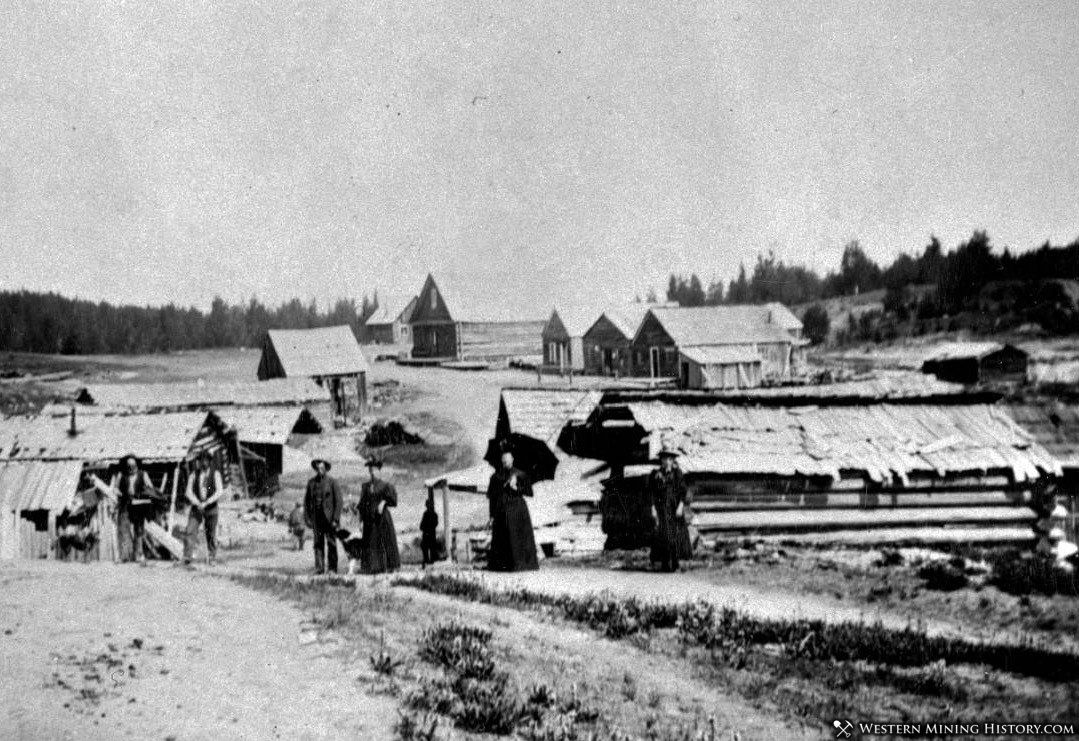Florence History
The following text is from the Nez Perce National Forest Service publication "The Lure of Gold".
In August of 1861, gold was discovered in the small creeks and gulches around the Florence Basin. Miners began trickeling into the area. What started as a small tent city with 50 residents grew into a bustling, strategically placed (in the center of the new gold diggings at the head of Baboon Gulch) city of 9,000 by the following year.
This "boom" ultimately lead to the establishment of the Summit Creek Mining District.
By late summer this quick growing town boasted a sawmill, ten butcher shops, seven bakeries, eight lawyers, six gambling saloons, a few "hole in the wall doggeries" (saloons), a dance house, Masonic Hall, and a jail. A few of the log cabins, particularly the saloons, had fancy fronts and glass windows but others let in the light through muslin coverings.
In preparation for winter the miners began constructing cabins with logs dragged to the site on hand sleds from over a mile away.
What began as not much more than a meek miner's camp swiftly turned into a thriving town, with two main intersecting town streets named Main and Miner and a third named Pine.
Although how this mining town originally received her name remains shrouded in controversy, in November of 1861, Florence received her name. By December the town was laid out and a city government established.
Incredible amounts of gold dust were produced in Florence and in 1862 alone, six to seven million dollars worth of gold had been extracted. By the summer of 1862 this little miners camp had flourished into a boomtown.
Winter in the wild, wild west
The winter of 1861 & 1862 at Florence became known as the worst on record. It snowed 113 days in a row. Snow depths of 10 feet were reached. Miners were forced to stop mining when their rockers froze. Supplies ran short and miners lived for weeks on a diet of flour and water or "spruce tea" made by melting snow.
Although the deep snow kept pack trains from reaching Florence, some supplies did make it packed in on the backs of men referred to as "Boston Jackasses." After the long winter, the first pack train did not reach the town until May 16, 1862.
Florence was a haven for outlaws
In addition to having brutal weather, Florence was considered one of the roughest towns in the West during the winter of 1862-1863.
Alonzo Brown, a store keeper who once lived in Florence, said: “Men had a habit of getting drunk at the saloons and shooting into stores and tents as they went by. I slept in the store on the floor, and to protect myself from the stray bullets fired by drunken men, I piled up a stack of flour as wide as my bed and about four feet high and made down my bed behind the flour.
The town was filled with the worst element of the Pacific Coast, and thieves and gamblers from the East.”
"Not infrequently some drunken ruffian draws his revolver and begins to shoot in the midst of the vast crowd, often killing or wounding some one and creating a fearful stampede...There is no law here, or none that sees, abates, retards or punishes crime. Scarcely a day passes that someone is not killed or wounded." -P.W. Gillette (diary) June 15, 1862
The riches of Florence attracted not only men looking to make a fortune in gold, but also the ruffians who followed in their wake—dishonest gamblers, outlaws and thieves. Men referred to as highwaymen held up travelers stealing all their valuables on the main travel route between Lewiston, Oro Fino and Florence.
One such highwayman, the legendary Henry Plummer, is rumored to also have been in Florence. In the spring of 1862, two of Plummer's pals, Cherokee Bob Talbotte and Billy Mayfield drifted into Florence.
They brought with them a "woman of ill-repute" known as Red-Headed Cynthia. Both of the men were interested in the fiery redhead and a showdown of sorts seemed inevitable. When confronted by the two men regarding her alliance, Cynthia chose Bob, now a business man and owner of the newly acquired Boomerang Saloon. Billy left town the next day, never to return.
Little did Bob know that within a few short months he would lie in a grave on “boot hill”, mortally wounded in a gunfight at age 29, defending the reputation of the red-haired beauty. Cherokee Bob had taken over the Boomerang Saloon when he first arrived in Florence by throwing out the owner, and claiming the owner’s deceased partner was in debt to him.
It was here Florence's highwaymen would gather in order to gain information about the plans of wealthy travelers and shipments of gold dust. It wasn't long before Florence’s most notorious resident and outlaw, Cherokee Bob, met his bloody fate.
On January 2, 1863, Orlando “Rube” Robbins and Jakey Williams shot and mortally wounded Bob during a gunfight on the street in Florence. He died three days later. The men were hastily tried for the act four days later and cleared of the crime.
Robbins later became a well-known deputy US Marshall in the Boise area and was often referred to as the “Wyatt Earp of the Boise Basin”.
Influence of the Civil War
Although the Civil War was being fought thousands of miles away at the same time Florence was booming, the Florence gold rush had an impact on the national economy during the Civil War years.
With the South providing the largest export item in the United States, cotton, the North faced a devastating loss of revenue. The North turned westward in search of resources to fund the war and aid the failing economy.
Gold became the answer and Idaho gold mines were a key producer. Many historians believe that Idaho gold mines directly contributed to the victory of the war by the North.
The Civil war also had quite an affect on the residents of Florence. In 1862, Main Street in Florence was referred to as the "Mason-Dixon line" by Southern sympathizers and understood to be the dividing line between the factions. As the 4th of July neared, tensions between the two sides intensified. Fearing a fight, residents came up with a plan to avert bloodshed.
Two committees were formed — one of southern sympathizers and one of northern — and hired Charles Ostner. A miner and former Heidelberg, Germany art student, Ostner was given the task to prepare a fitting tribute to the country to be unveiled on Independence Day, 1862.
Residents brought snow and piled it in the center of Main Street. Every night the growing pile of snow was drenched with water creating a large block of ice. Hidden behind a tarp, Ostner went to work and on the 4th of July hostilities were avoided when his work was unveiled: a sculpture of George Washington on horseback; an American symbol that proved satisfying to both factions.
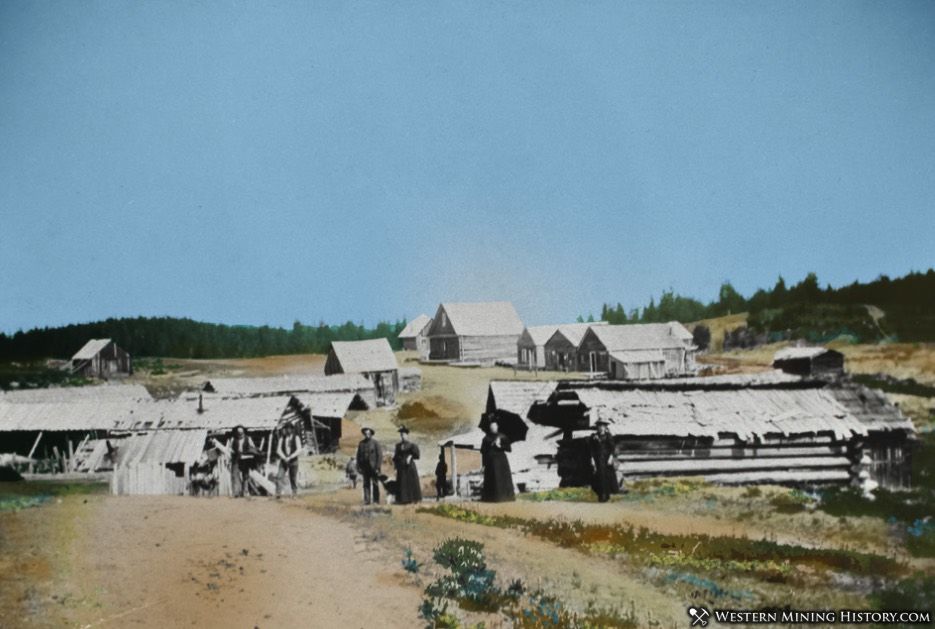
Idaho County's 1st County Seat
In December 1861 the territorial legislature created Idaho County and Florence became the first county seat.
By 1875, Mount Idaho, built largely as a stop for traffic to the gold fields, was developing into a prosperous town, promising to be a more permanent settlement than Florence, and in 1875 won a special election for county seat. In 1902 Grangeville was designated as the county seat and remains so today.
Jaspar Rand served as the Florence City Justice of the Peace in 1862. Justice Rand handled cases varying from cattle theft and murder to performing wedding ceremonies. Because of the frequency of claim jumping and theft, a vigilance committee for Florence was suggested as early as February 1862.
According to Florence court records, thirty-two cases were held in November and December of 1862 and fifty-eight from January to August of 1863.
First Library in Idaho
Sitting wrapped in a blanket by the fire with a good book provided a welcome diversion from the dark, long, and cold wintry evenings in the remote mining camp.
In the winter of 1862-1863, one enterprising Florence store owner operated a rental lending library as part of his business, offering about 115 books for loan, including novels, drama and poetry, and non-fiction such as history and politics.
Sixty-two men and one woman borrowed books, paying $3 a month for the privilege. In 1868, $150.00 was raised to finance a library to serve the continued desire for reading materials by Florence’s residents.
First Public School in Idaho
The first public school in Idaho was located at Florence in 1864. At the first session of the territorial legislature the public school law of California was adopted with minor changes to fit conditions in Idaho.
Major Frank Fenn’s father, who was a member of the assembly, returned to Florence that winter and formed a public school district there. A small, 12' x 14' hewn-log building with a whipsawed board floor and shingled roof was erected as a schoolhouse.
Mrs. J.H. Robinson from Ohio was the first school teacher and was paid $100 per month for teaching six scholars including Major Fenn, two of his siblings, and three other young boys.
First Masonic Hall in Idaho
In 1862, at the reputed cost of $10,000, the first Masonic Hall of Idaho was built in Florence by Masons with help from a few Odd Fellows. Although no Masonic Lodge was ever formed, it served as a Masonic “Club,” and was shared with the Odd Fellows.
Idaho's First State Wagon Road: The Milner Trail
In 1890 the Milner Trail, originally built by Moses E. Milner in 1862, was reconstructed becoming part of Idaho's first state wagon road from Mt. Idaho to near Payette Lake.
Today much of the road remains in its original location. In fact, Forest Service Road #643 traveling through the old Florence townsite, was the original Milner Trail and also served as the main street of Florence.
The Milner Trail ascended from Mount Idaho south along the hogback ridge to the Adams Way Station and into Florence, avoiding the great elevation changes of White Bird Hill and the high ridge above Florence.
The Milner Trail between Mount Idaho and Florence was authorized in 1864 by the territorial legislature as a toll trail, with charges of $3 per wagon and horse or mule, $1 per horseman and 50 cents per loaded pack animal.
Born in Kentucky, Moses Milner was a colorful character (aka "California Joe"), traveled widely, trapped in Missouri and Wyoming, was a pioneer in Oregon, mined in California, Idaho and Montana.
He later served as a scout in the U.S. Army. He worked with men like Jim Bridger, Kit Carson, Wild Bill Hickock, and Generals George Armstrong Custer, Phil Sheridan, and George Crook.
Chinese Miners
Typical of Idaho mining towns, the original laws of mining districts denied Chinese the right to own or operate mining claims.
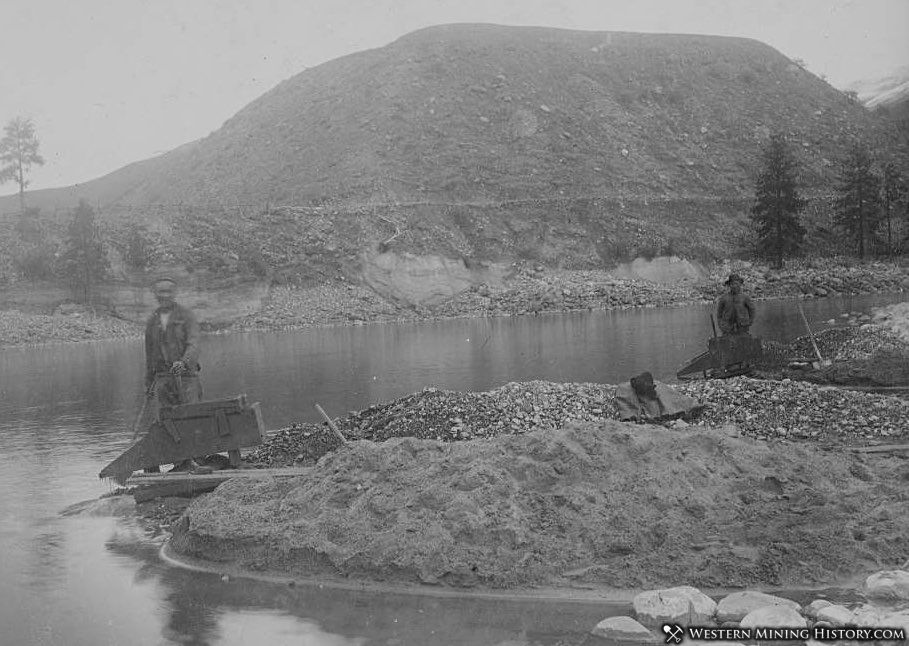
Chinese miners began coming to Idaho in 1864 as the richest claims were worked out and the Idaho legislature passed an act allowing Chinese to mine in Idaho if they paid a monthly license fee. White miners and the Summit Creek Mining District voted to officially admit Chinese to the mining district in 1869 (when the best deposits had been exhausted).
In 1870, Florence had twenty-one male and one female (a prostitute) Chinese residents and by 1874, the Chinese dominated the camp. In 1885, two-hundred Chinese worked in Florence. They remained in the Florence Basin until the late 1890s.
Old Florence Meets New Florence
Florence’s prosperity was brief, and by August of 1862 many left the area in search of richer claims.
In the summer of 1865, the remaining residents of Florence were burning unoccupied houses for firewood and much of the ground was placer mined. By that winter only one man was in residence at Florence, a gambler named Billy Courtney who was hired to keep the snow shoveled off the roofs of several buildings in town.
Although the big rush was short-lived, mining activity continued in the Florence Basin. By 1865 Chinese miners had entered the basin, remaining until the late 1890s. In 1896, promises of renewed quartz and placer mining brought hopeful miners back to the basin for a second big boom.
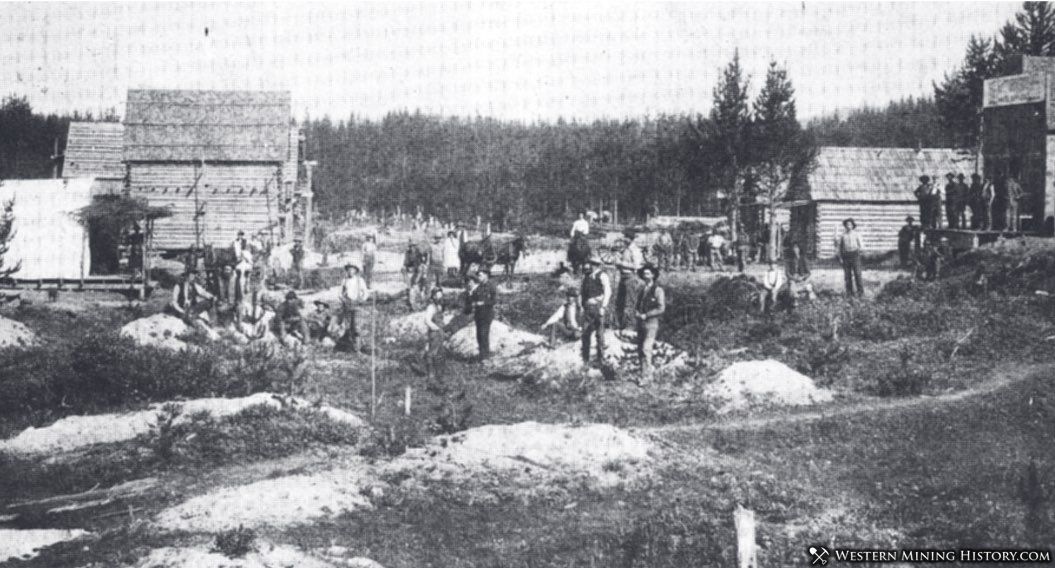
Due to friction between the new wave of miners and the owners of the original townsite, a new town was established about one-half mile south of Florence. New Florence was located where roads leading to the major mines of the Summit Creek mining district converged with the Milner Trail, by then a state wagon road.
In 1924, the Submarine Gold Placer & Quartz Mining Company shipped in a large steam shovel to work the placer grounds in 1924, literally obliterating much of what was left of Old Florence. By 1933, of the original buildings, only one remained partially standing - a hurdy-gurdy house.
Today, all that remains of Old Florence are hints of the once thriving boom town - the cemetery, historic photographs, and a treasure trove of tales that read like an old western novel.
Idaho Gold
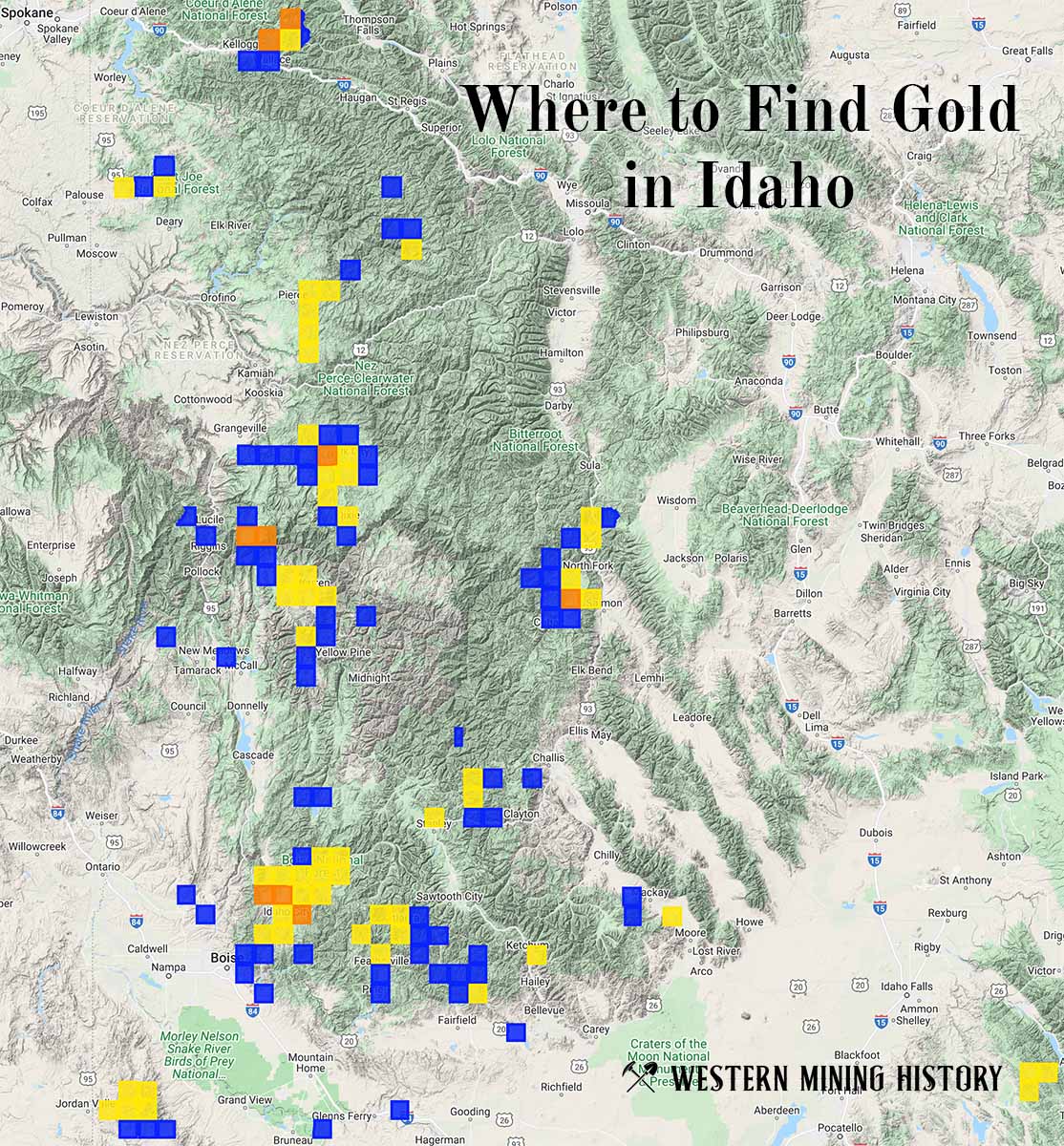
"Where to Find Gold in Idaho" looks at the density of modern placer mining claims along with historical gold mining locations and mining district descriptions to determine areas of high gold discovery potential in Idaho. Read more: Where to Find Gold in Idaho.
